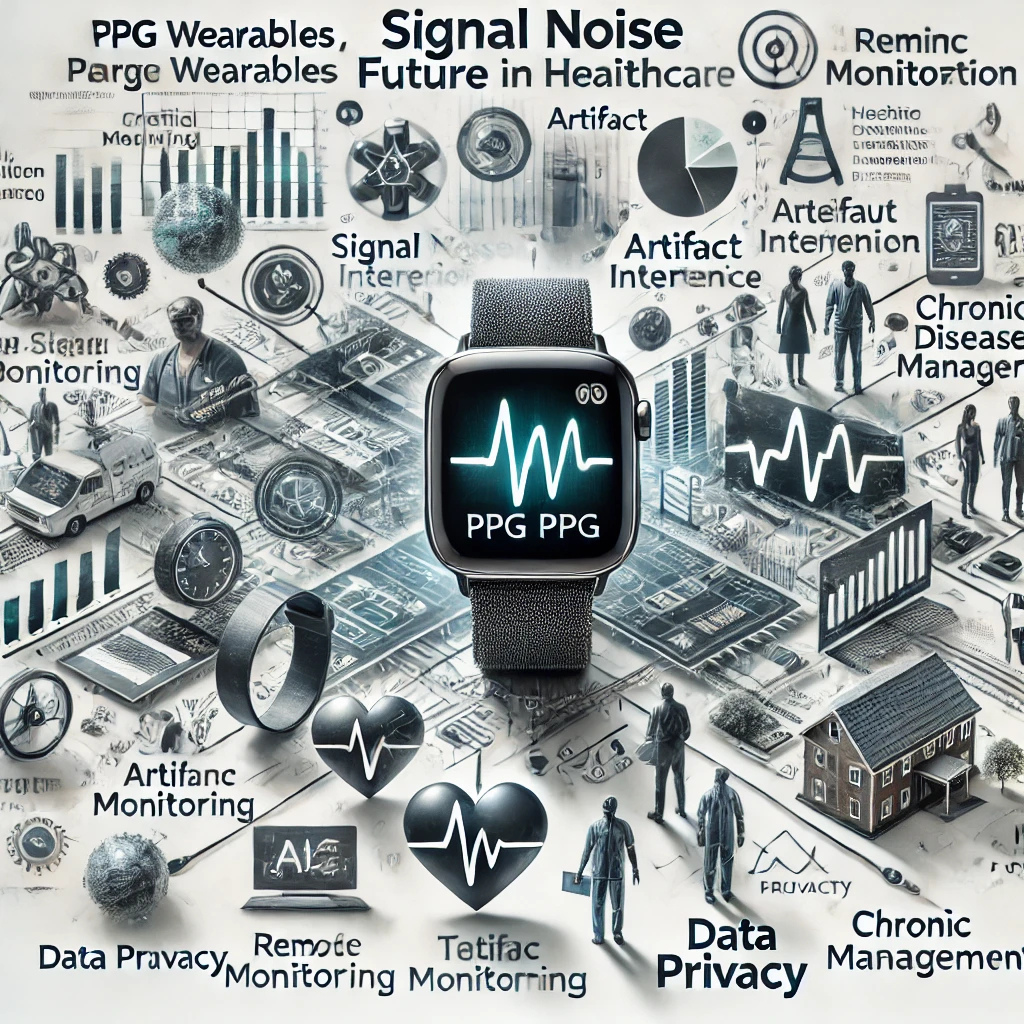Introduction
In recent years, wearable health technology has rapidly evolved, offering innovative solutions for continuous health monitoring. One such advancement is the use of photoplethysmography (PPG) devices, commonly found in smartwatches and fitness trackers (Kim & Baek, 2023). PPG is a non-invasive optical technique that measures changes in blood volume within the microvascular bed of tissue, using a light source and a photodetector. This technology has gained significant traction for monitoring vital signs such as heart rate, blood oxygen saturation (SpO2), and even heart rate variability (HRV). With the increasing prevalence of chronic diseases like cardiovascular diseases, diabetes, and hypertension, wearable PPG devices are emerging as valuable tools for both patients and healthcare providers. This blog critically examines the role of these devices in managing chronic conditions, highlighting their benefits, limitations, and potential impact on healthcare.
Advantages of Wearable PPG Devices in Chronic Disease Monitoring
Wearable PPG devices offer several advantages for chronic disease management. Firstly, they provide continuous and real-time monitoring, allowing patients to track their health metrics throughout the day (Prieto-Avalos et al., 2022). This constant data stream is crucial for individuals with chronic conditions like heart disease, where fluctuations in heart rate or blood pressure can indicate potential issues. For instance, patients with atrial fibrillation (AFib) can benefit from early detection of irregular heart rhythms, enabling timely medical intervention.

Secondly, these devices empower patients to take an active role in their health management. Real-time feedback on vital signs encourages users to make lifestyle adjustments, such as increasing physical activity or reducing stress, based on their current health status. Moreover, PPG-based devices are often paired with smartphone apps that provide users with personalized insights and trends over time, enhancing patient engagement and compliance with treatment plans.
Another significant advantage is the potential to reduce healthcare costs (Namvari et al., 2022). By allowing for early detection of anomalies and continuous monitoring, wearable PPG devices can help minimize hospital visits and prevent emergency situations. This proactive approach is particularly beneficial for managing chronic diseases that require long-term, consistent care.
Limitations and Challenges of PPG Wearables
Despite their potential, wearable PPG devices have several limitations that affect their reliability and accuracy. One major challenge is signal noise and artifact interference, particularly during physical activity (Fine et al., 2021). Movement, changes in skin temperature, and varying levels of skin pigmentation can significantly affect the quality of PPG signals, leading to inaccurate readings. For example, when a user is running or exercising, motion artifacts can distort heart rate measurements, making it difficult to obtain accurate data.
Furthermore, the limited accuracy of PPG devices compared to traditional clinical-grade equipment is a concern. While PPG devices are useful for general monitoring, they often fall short when it comes to diagnosing specific medical conditions. For instance, a study published in the Journal of the American College of Cardiology found that wearable PPG sensors had lower sensitivity in detecting AFib compared to electrocardiogram (ECG) monitors (Lubitz et al., 2022). This limitation may result in false positives or false negatives, potentially causing unnecessary anxiety or missed diagnoses.
Potential Impact on Healthcare and Future Directions
Wearable PPG devices have the potential to significantly impact healthcare delivery, particularly in the realm of remote monitoring and telehealth (Tariq, 2024). By providing continuous health data, these devices enable healthcare providers to monitor patients’ conditions outside of clinical settings. This is especially beneficial for patients with mobility challenges or those living in remote areas with limited access to healthcare facilities. Looking ahead, advancements in algorithms and machine learning could enhance the accuracy of PPG devices. By filtering out noise and compensating for variables such as motion, these technologies can improve data quality, making wearable PPG devices more reliable.
Conclusion
Wearable PPG devices have the potential to play a significant role in the management of chronic diseases by providing continuous, real-time health monitoring. They offer a convenient and non-invasive solution for tracking vital signs, empowering patients to take control of their health and enabling healthcare providers to make data-driven decisions. However, the limitations in accuracy, particularly during physical activity, and concerns over data privacy highlight the need for further advancements in this technology.
As wearable health technology continues to evolve, the integration of more sophisticated sensors and machine learning algorithms may enhance the reliability and utility of PPG devices. For now, while wearable PPG devices are a promising tool for chronic disease monitoring, they should be used as a supplement to, rather than a replacement for, traditional clinical assessments.
References
- Kim, K. B., & Baek, H. J. (2023). Photoplethysmography in wearable devices: a comprehensive review of technological advances, current challenges, and future directions. Electronics, 12(13), 2923. https://doi.org/10.3390/electronics12132923
- Prieto-Avalos, G., et al. (2022). Wearable devices for physical monitoring of heart: a review. Biosensors, 12(5), 292. https://doi.org/10.3390/bios12050292
- Namvari, M., et al. (2022). Photoplethysmography enabled wearable devices and stress detection: a scoping review. Journal of Personalized Medicine, 12(11), 1792. https://doi.org/10.3390/jpm12111792
- Fine, J., et al. (2021). Sources of inaccuracy in photoplethysmography for continuous cardiovascular monitoring. Biosensors, 11(4), 126. https://doi.org/10.3390/bios11040126
- Lubitz, S. A., et al. (2022). Detection of atrial fibrillation in a large population using wearable devices: the Fitbit Heart Study. Circulation, 146(19), 1415-1424. https://doi.org/10.1161/CIRCULATIONAHA.122.060291
- Tariq, M. U. (2024). Advanced wearable medical devices and their role in transformative remote health monitoring. IGI Global. https://doi.org/10.4018/979-8-3693-3661-8.ch015